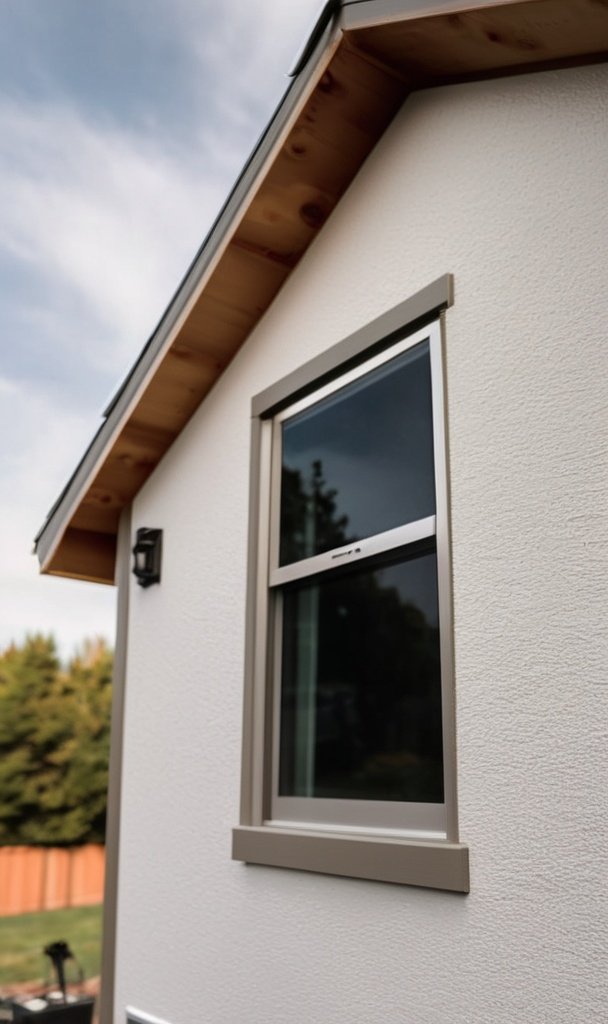Exploring Stucco Siding Options for Your Tiny Home
Introduction
Stucco has long been a favored choice for home exteriors due to its versatility, durability, and distinctive aesthetic appeal. When considering a tiny home on wheels, stucco siding can provide not only an attractive finish but also excellent insulation properties, making it a wise investment. In this post, we’ll explore the various stucco siding options, highlighting their pros and cons, to help you make an informed decision for your tiny home.
Types of Stucco Siding Options
Traditional Stucco
Description: Traditional stucco is a cement-based material applied in layers over a wire mesh framework. It creates a durable, hard finish that can be textured or smooth.
Pros: Highly durable, resistant to fire, and offers excellent insulation. It can be painted in various colors to match your design.
Cons: Installation can be labor-intensive and may require professional help, especially for intricate designs. Additionally, it can crack over time if not properly maintained.
More Information: Visit Nomadic Structures - for more details.
Synthetic Stucco (EIFS)
Description: Exterior Insulation and Finish System (EIFS) is a modern synthetic stucco that consists of foam insulation boards covered with a weather-resistant base and finishing coat.
Pros: Lightweight, energy-efficient, and available in a wide range of textures and colors. It also provides superior insulation compared to traditional stucco.
Cons: More susceptible to moisture issues if not installed correctly, which can lead to mold growth. Proper maintenance is essential to ensure its longevity.
More Information: Check out Nomadic Structures - for further insights.
Acrylic Stucco
Description: Acrylic stucco is similar to traditional stucco but uses acrylic polymers instead of cement. This provides a flexible finish that can withstand cracking.
Pros: Offers a wide array of colors and textures, is resistant to fading, and can be applied in thinner layers. It’s also more resistant to moisture than traditional stucco.
Cons: Generally more expensive than traditional stucco and may require professional installation. It can also be prone to scratches and dents.
More Information: Learn more about Nomadic Structures - Acrylic Stucco.
Stucco Panels
Description: Pre-fabricated stucco panels are available for those seeking a quicker installation method. These panels are designed to mimic traditional stucco while being easier to install.
Pros: Fast installation, lightweight, and can reduce labor costs. They come in various styles and finishes that resemble authentic stucco.
Cons: May not offer the same level of insulation as traditional stucco and can be less durable in extreme weather conditions.
More Information: Visit Nomadic Structures - for additional details.
Making Your Choice
When choosing stucco siding for your tiny home, consider factors such as climate, budget, and maintenance preferences. Traditional stucco offers durability and insulation but requires maintenance to prevent cracking. Synthetic and acrylic stucco provides modern benefits and aesthetics but may come with higher costs. Stucco panels can be a great option for quick installation, but ensure they meet your insulation needs.
Conclusion
Stucco siding can provide an attractive, durable finish for your tiny home. Understanding the different options available allows you to choose the best siding that fits your needs and aesthetic preferences. Whether you opt for traditional stucco or explore synthetic alternatives, ensure you consider the long-term maintenance and insulation properties to create a comfortable living space.


